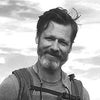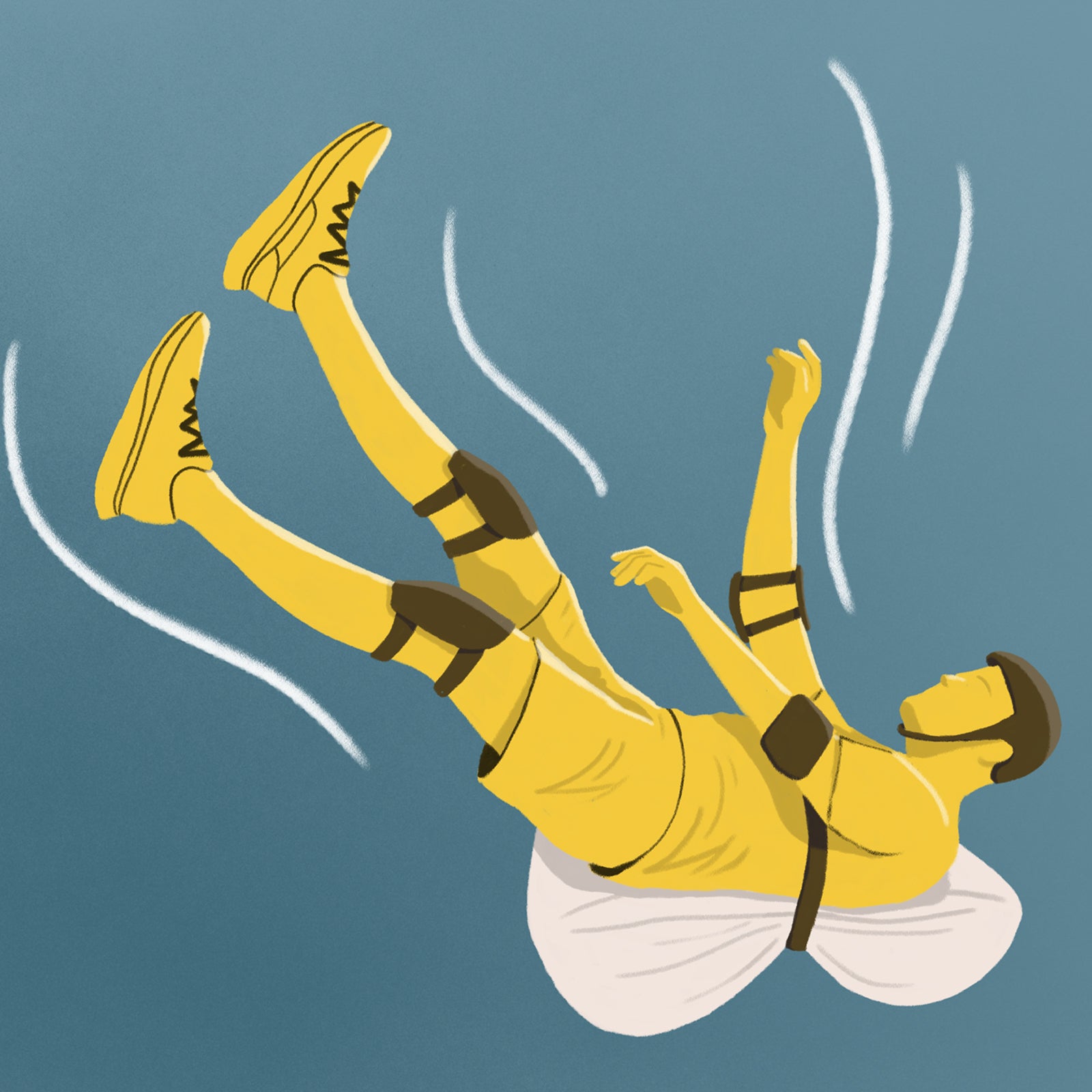Learning a new sport is an intimidating prospect. It’s even more daunting as an adult, when a fall off your new bike or skis could mean injury, broken bones, time off work,��or��a spouse who has to carry your load while your clavicle heals. But there’s no reason to fear. In fact, you should embrace the tumble and consider it one more technique to add to your growing skill set. “I actually like falling, at least when I’m not getting injured from it,” says , a professional trail runner and coach. “If you do it right, it’s like being a kid again.”
We asked expert guides, trainers, and coaches in a variety of sports to break down��how to��fall��safely in each of their disciplines.��
Skiing��
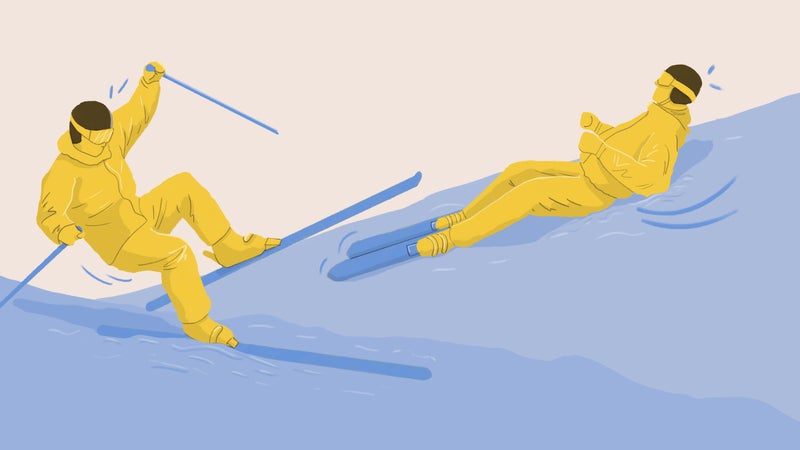
The majority of falls in skiing are relatively low impact, especially for beginners moving at slow speeds on mellow terrain. “Beginners tend to fall backward and uphill,” says Lexey Wauters, assistant director of the Mountain Sports School in Jackson Hole, Wyoming. And that’s��the safest way you can fall, as long as you don’t fight it. “The problem is��most skiers try to fight the fall and keep themselves upright.��And that’s where you’re most likely to rupture an ACL.” Instead of��resisting��the fall, as soon as you feel yourself tipping back, give in to it. Keep your feet on the downhill side of your body, and try to stop yourself with your skis and boots as soon as your butt hits the snow. If you’re on steep terrain, self arresting is more important—after you go down on your butt, dig in your feet and elbows.
If you’re moving faster and find yourself falling headfirst downhill, or “Supermanning,” Wauters says you need to pull your hands into your body so you’re not landing on your wrists. Then, as soon as you hit the snow, try to swing your feet below your body and self arrest. “It’s not necessarily about the fall when you’re skiing,” Wauters says. “It’s what you do immediately after the fall. That’s what will prevent the most injuries.”
Mountain Biking
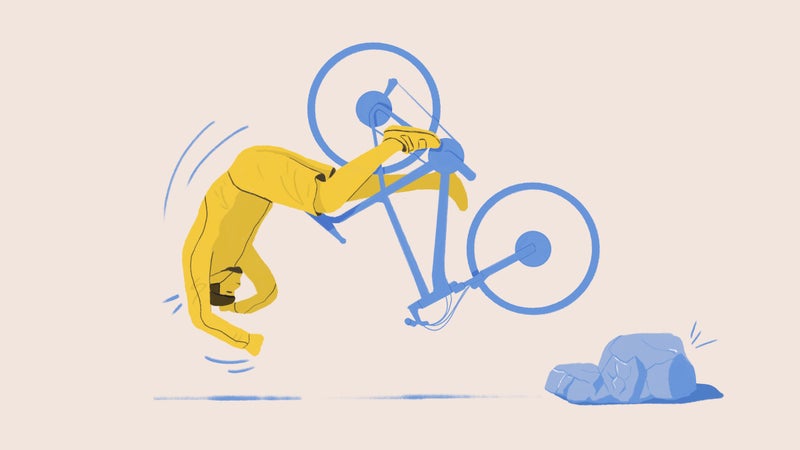
Falling on a mountain bike��is inevitable, even as you progress and get more competent. “But the more you��crash, the better you get at it,” says Lindsey Richter, a professional biker and founder of the . Richter, who has had her fair share of tumbles, coaches new riders over their initial fear of falling. She says the best way to prevent falls is to keep a positive attitude. “We teach new bikers to keep their thoughts positive so that they’re not obsessing about crashing. Because when you think about crashing, it’s more likely to happen,” Richter says.
When you do fall, Richter says your best strategy is to go limp. “The worst thing you can do on a mountain bike is stiffen up. Riders get ejected, and they stick their arms out to catch themselves. That’s when things get broken,” she says. Instead, try to relax if you’re going over the handlebars, Richter advises.��Pull your arms in, and try to protect your head, doing your best to tuck and roll. “Falling is part of biking, and it’s part of life. If you can get to the point where you’re crashing and not getting seriously injured, it’s actually kind of beautiful,” she��says.��
Bouldering
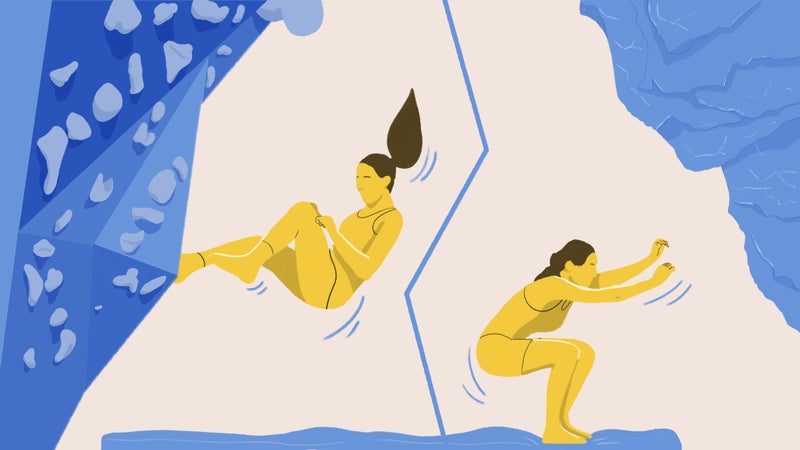
“Climbing is 10 percent��sending and 90 percent��falling,” says Nina Williams, a professional climber who specializes in highball��boulder problems that are sometimes 50 feet tall. She’s also been coaching and teaching workshops for more than a decade. “If you’re sending more than you’re falling, then you’re not trying hard enough.”
Williams says that boulderers need to accept the fact that they��are going to fall and start treating it as another skill ripe for improvement. To learn to fall better, head to the gym and start off in a safe space with plenty of padding. Climb as high as you feel comfortable and take a fall backward. Keep your hands tight to your body—don’t try to break your fall with your hands—fall onto your butt, and roll onto your back in one smooth motion. Keep climbing and falling, progressing to greater heights.
Once you move outside, Williams has a few key tips to keep you falling safely. First, when you’re on the rock, look down. Spot your landing on the crash pad so you know what obstacles are in your path when you do fall. Like in the gym, try to loosen up when you let go, keeping your hands and arms tucked in. Try to land on your feet, deeply bending your knees and relaxing your upper body, then fall backward on your butt. And finally, practice. While you’re warming up, jump down from the top of the boulders and practice your landing. “When you do it enough, falling becomes this slow-motion act where you realize how you’re going to land and you can prepare yourself for impact,” Williams says.
Surfing
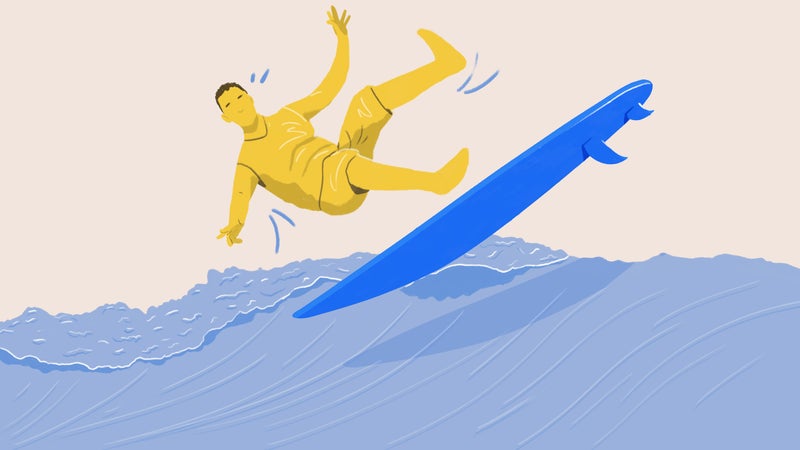
Tumbling while surfing may not be as daunting a prospect compared to other sports, but there are a few nuances that can keep you safe when things go south on a wave. “The water will break your fall, so you need to use that advantage,” says Izzy Tihanyi, cofounder of surf camps and clinics, where she’s been teaching new surfers for almost 25 years. Ideally, you want to fall back into a wave, extending your arms and legs away from your torso like an X,��so you’re��increasing the surface area of water��you hit. “Think of a starfish,” Tihanyi says. “The goal is to land flat against the water and stay shallow, avoiding any kind of reef or rocks underneath.”
If you’re going over the surfboard’s nose headfirst, cover your head, then hang out underwater for a few seconds to let the wave and your board pass over you. Let your hand break the surface first to make sure it’s clear. “We encourage people to enjoy the wipeout,” Tihanyi says. “Don’t panic. Don’t fight it. There’s a calming aspect to it if you have the right perspective.”
Trail Running
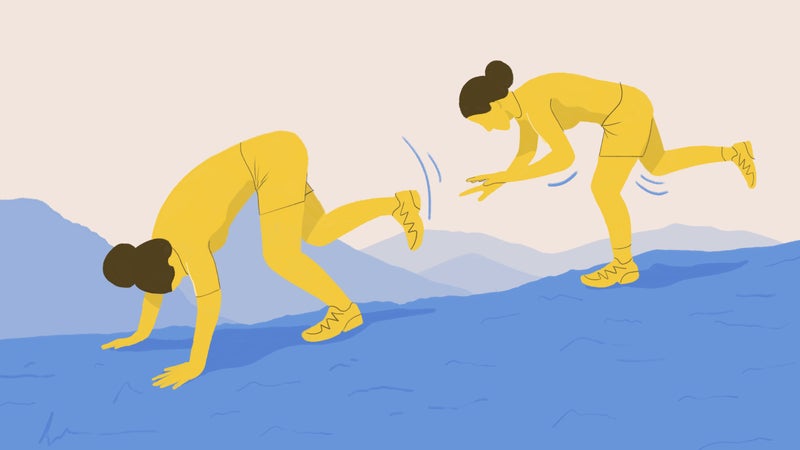
The best way to avoid��falling while trail running��is to study��the trail for hazards well in advance, according to��King.��“Don’t look at your feet. Scan the trail ten��meters ahead of you, and you’ll be able to react to objects in time,” he��says.��Shortening your stride, particularly while running through technical, rocky terrain, will give you better control and quicken your reaction time.
But if you run, you will fall. When you’re going down, throw your hands out to protect your head and face, but don’t stiffen your elbows. Think of your arms as shocks, absorbing the impact. If you’re moving at high speeds and falling headfirst, tuck your chin into your chest and try to roll over your shoulder to ease the impact. King says the more you practice, the better it will go in the wild. “Go back to what you would do as a kid, and work on your technique in a safe environment, like a grassy field or padded gym floor,” King says. ��
Road Cycling
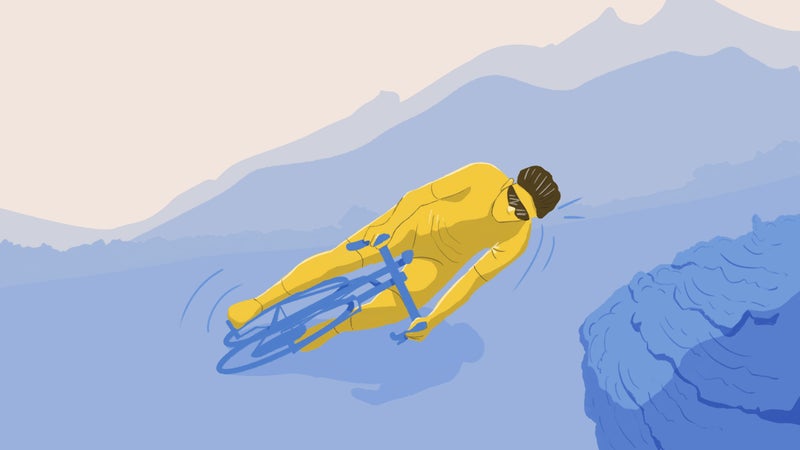
Is there anything scarier than eating it while clipped into a road bike? “Get your car going 25 or 30 miles per hour, and jump out of it while only wearing your underwear. That’s a visual of what’s happening when you fall off your road bike at speed,” says John Humphries, owner of , which leads multi-day cycling tours all over the country.��Falling on a road bike is never an attractive proposition, but Humphries says there are a couple of ways to mitigate the damage.
If you’re moving at high speed and you go over the handlebars, the only thing you can do is try to relax and tuck and roll. And you don’t have to worry about being clipped into your pedals; your feet will unclip on their own. A more common scenario while road biking, though, is when a cyclist slides out while carrying too much speed through a corner. In this instance, you actually don’t want to break your feet free from the pedals. “Stay on your bike,” Humphries says. “Keep your hands on the handlebars and your feet on your pedals so your bike (the outside of the bars and pedals) actually takes the worst of the skid. You’ll still get road rash, but not as much.”

